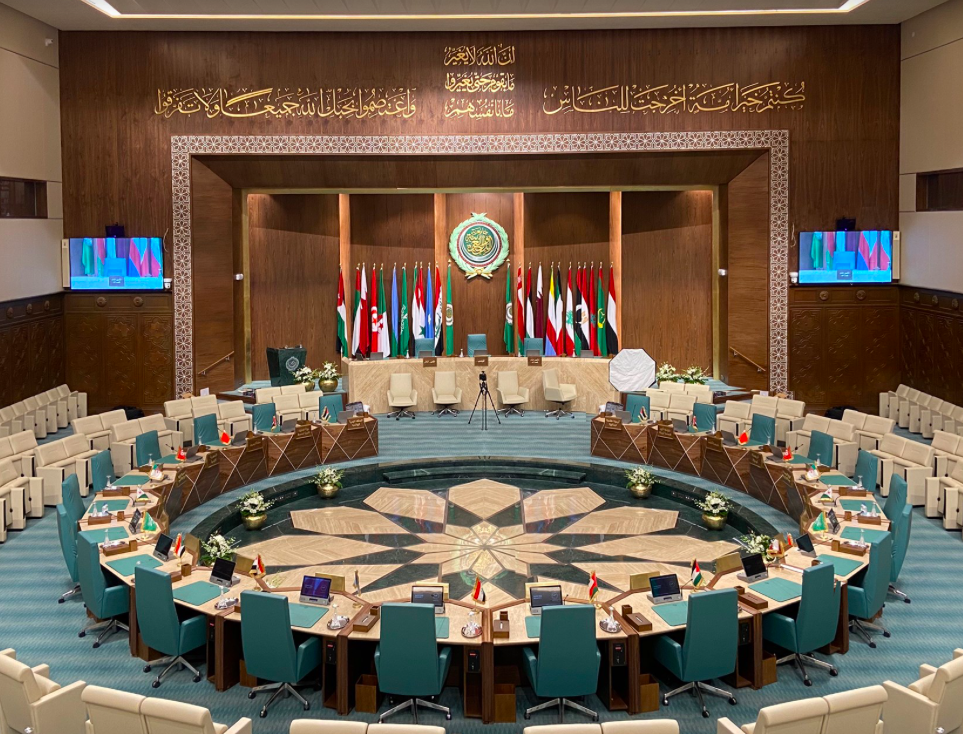
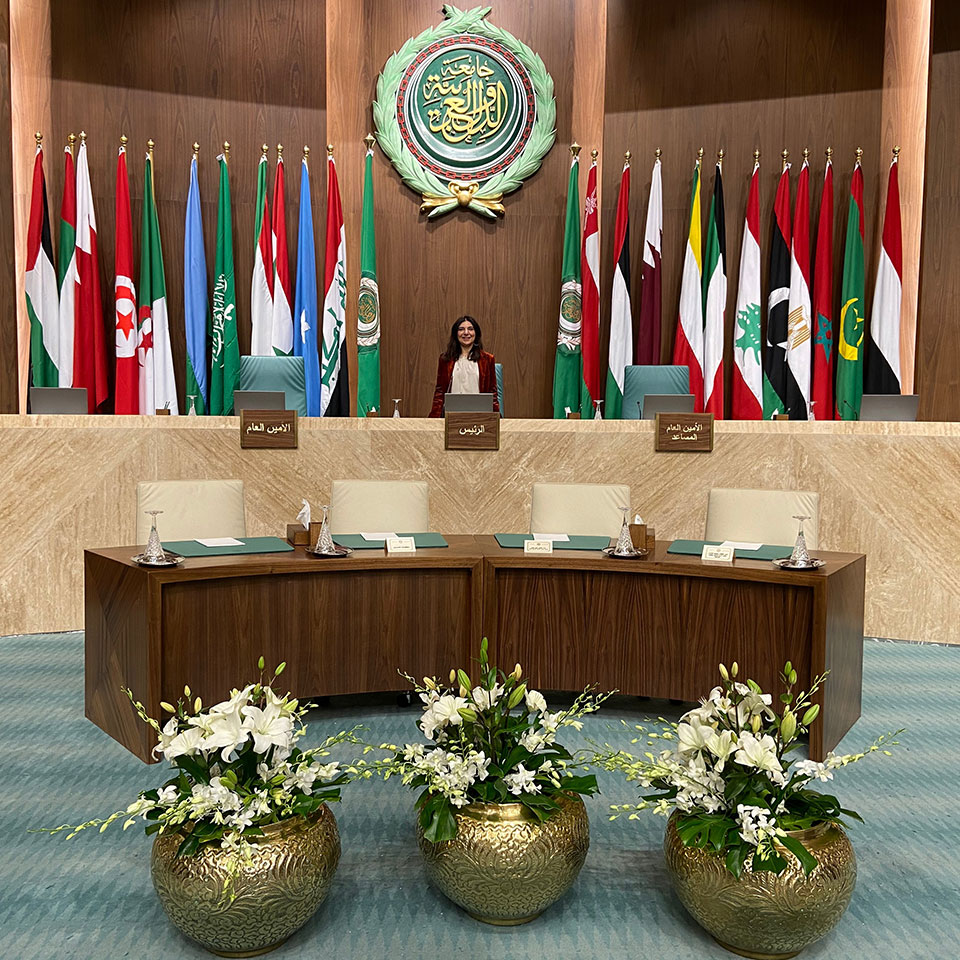
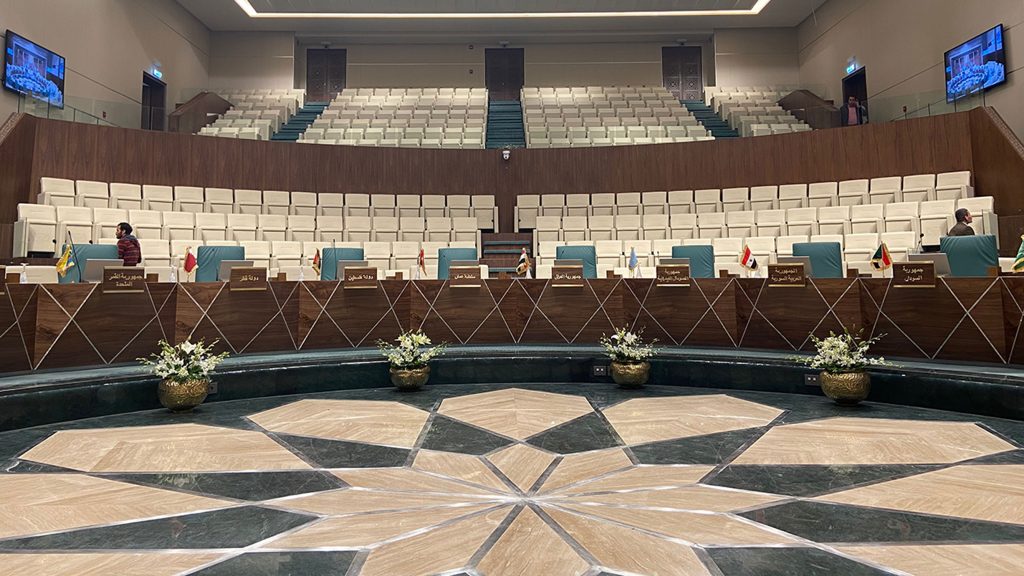
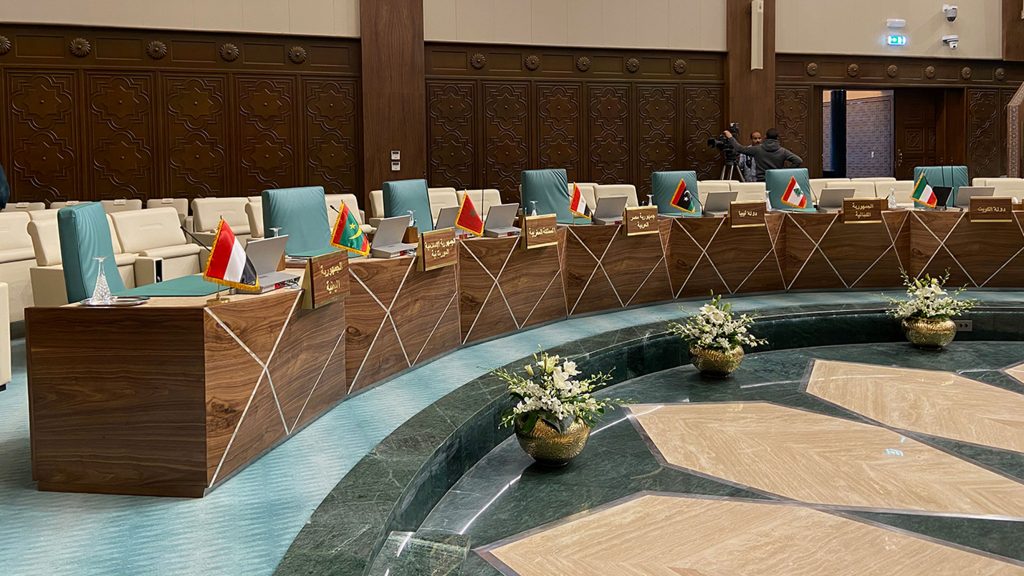
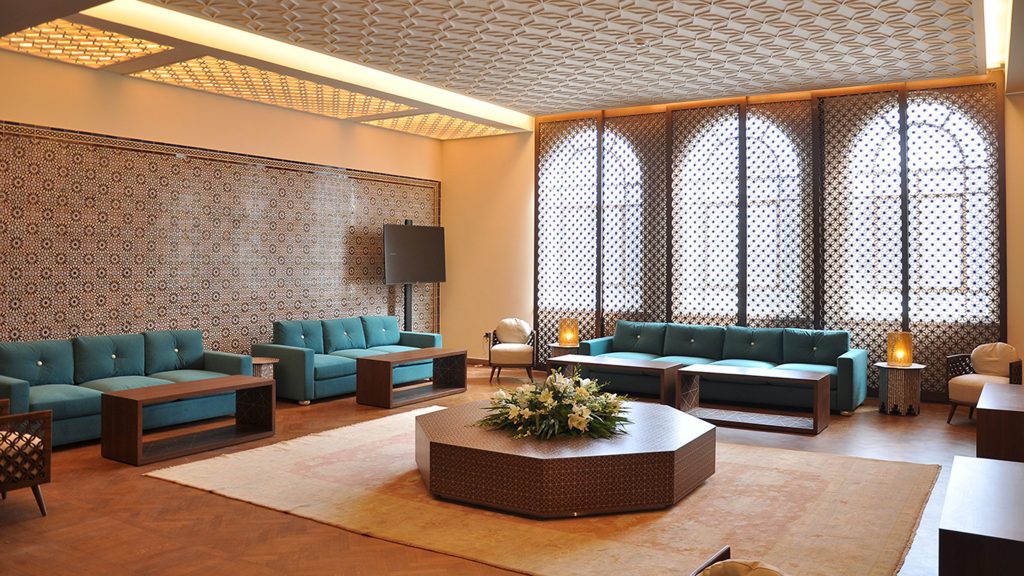
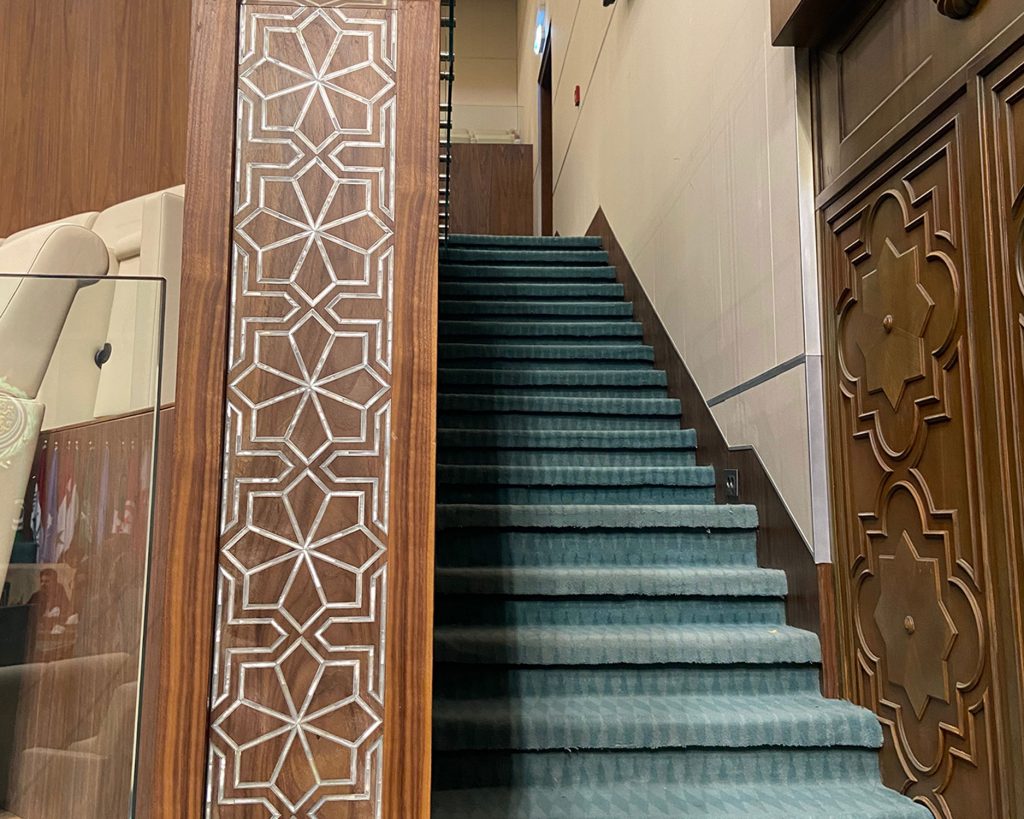






Carla Chahrour
A new era in design, dialogue and unity amongst the Arab states was marked through the renovation of the Arab League Hall, constructed in 1955, by International Designer Nada Debs in Cairo, Egypt
The four-year project, which began in 2015 was unveiled at the 153rd meeting of the Council of Arab Foreign Ministers in March 2020.
The renovation of the Arab League Hall began in 2015 and was commissioned and funded by the Ministry of Presidential Affairs of the United Arab Emirates with the aim of modernizing traditional elements while maintaining the essence of a distinctive Middle Eastern identity.
“My take was to create an environment that is contemporary and peaceful, but still relevant to our Arab culture and identity, in order to enhance unity and progressive thinking,” Nada Debs said.
Born in Lebanon, raised in Japan, educated and trained in the United States, and with work experience in the United Kingdom, Debs was selected for her ability to transform, elevate and create contemporary objects and spaces that knead narratives around communities and cultures.
With a mission to celebrate Eastern craftsmanship in contemporary design, her creations are as unique and eclectic as the designer herself.
Armed with her technical know-how of contemporary American design and her Far East upbringing, Debs’ signature design approach focuses on her pioneering work as a craft custodian where she creates a timeless appeal by safe-guarding craft legacies and making it relevant to future generations.
The design of the hall involved maintaining previous historically relevant elements such as the carved cladding and brass inscriptions, the scriptures above the main stage, the wooden wall panels, and the central circle of the hall, while complementing them with new design elements such as the ceiling, furniture and carpeting.
Restoring and strengthening the inherent Arab identity, Nada preserved historically relevant features of the place such as the scriptures above the main stage, the wooden wall panels, and the central circle of the hall.
The renovated space now includes a larger central circular unit, which was created through the extension of the main hall and the addition of the number of seats for the delegates. The circular space was also accentuated with a rhombus selected for its relevance to Islamic architecture and its intrinsic connection to the Middle East region as a symbolic element that unifies all Arab states.
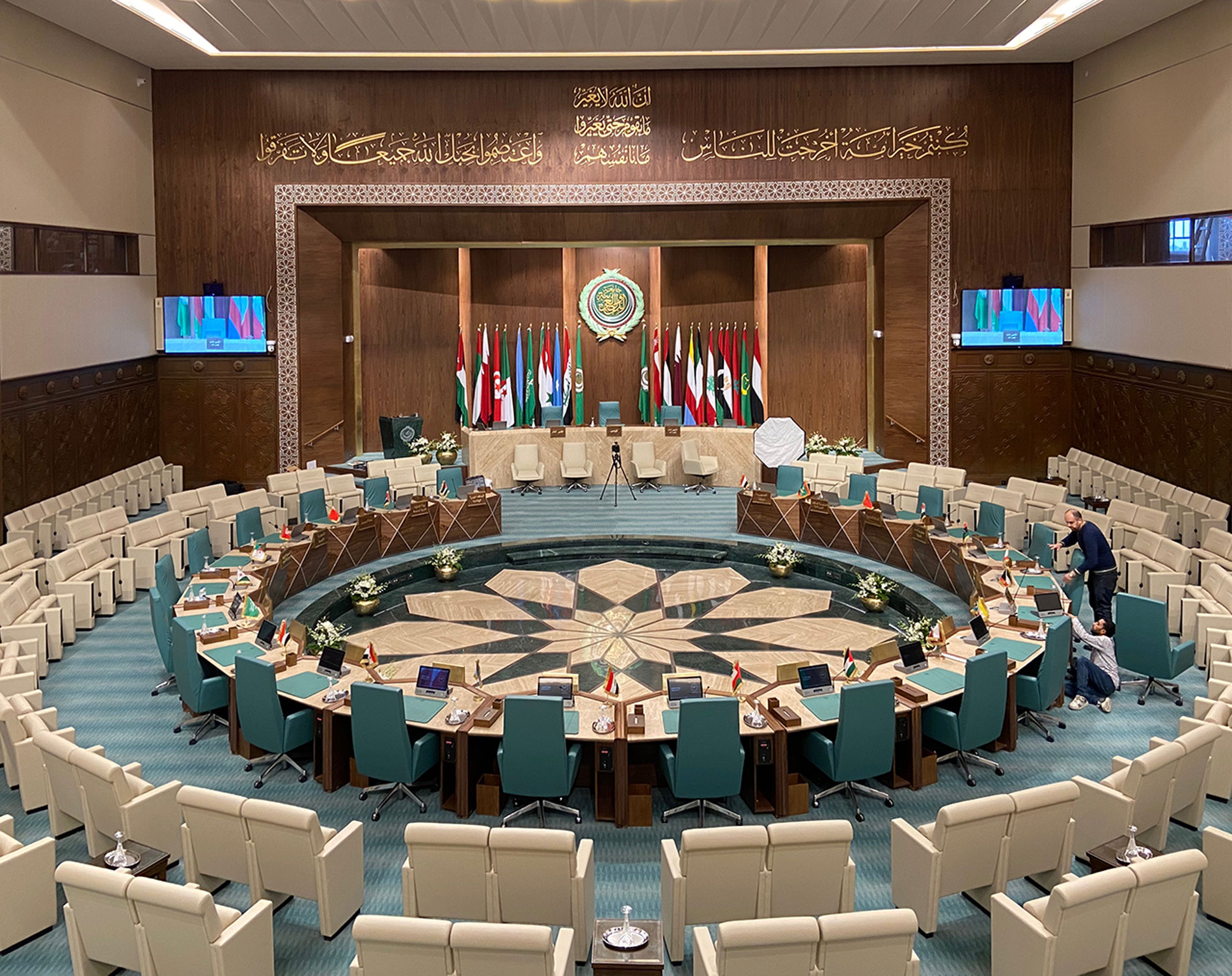 (Nada Debs)
(Nada Debs)Debs ensured that decorative patterns with geometrical motifs were included throughout the hall to evoke unity and advancement. A star composed of diamonds marks the center where all participants gather, and the audience seating radiates around them.
The Diamonds from this pattern are later transferred to the ceiling, floor and even the desks, adding a sense of harmonious motion. The preservation of the circular central space is used as a way of expressing the unification of arab states as it is seen as a symbol that emphasizes oneness.
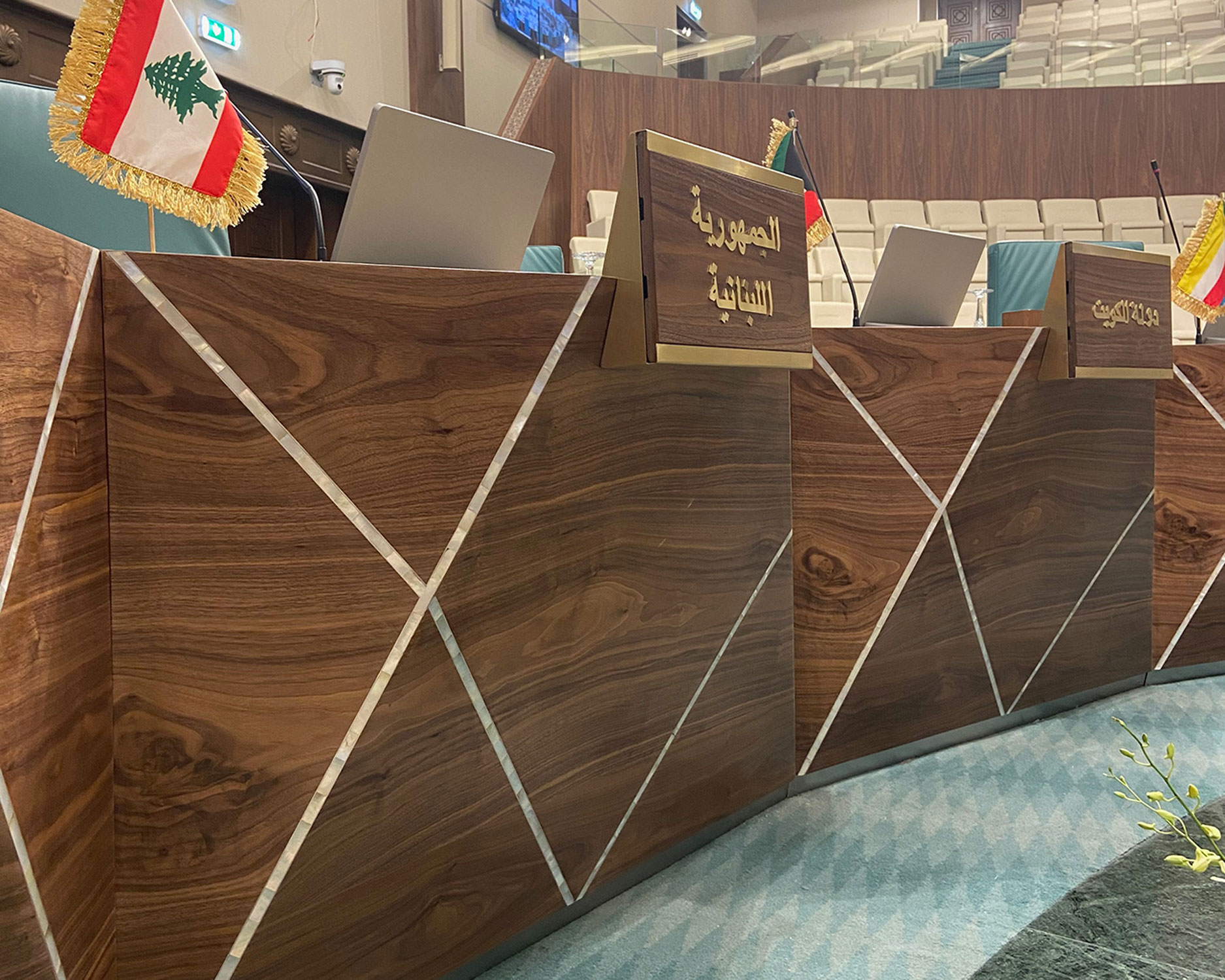 (Nada Debs)
(Nada Debs)The idea, Debs said, was to use the same geometric repetitive shapes and to juxtapose it using different mediums, materials and functions to visually represent the concept that essentially all arab states have different cultures, yet are united through geometry.
The integration of geometric shapes, primarily diamonds, in the creation of larger decorative patterns accompanied with the addition of colors such as turquoise or blue/green and beige within the space, allowed the fabrication of the mid-century modern aesthetic within the historically relevant elements, creating an upgraded take on the traditional.
According to Debs, the blue green colors were used due to their significance in the region and their association with the fertile colors of nature.
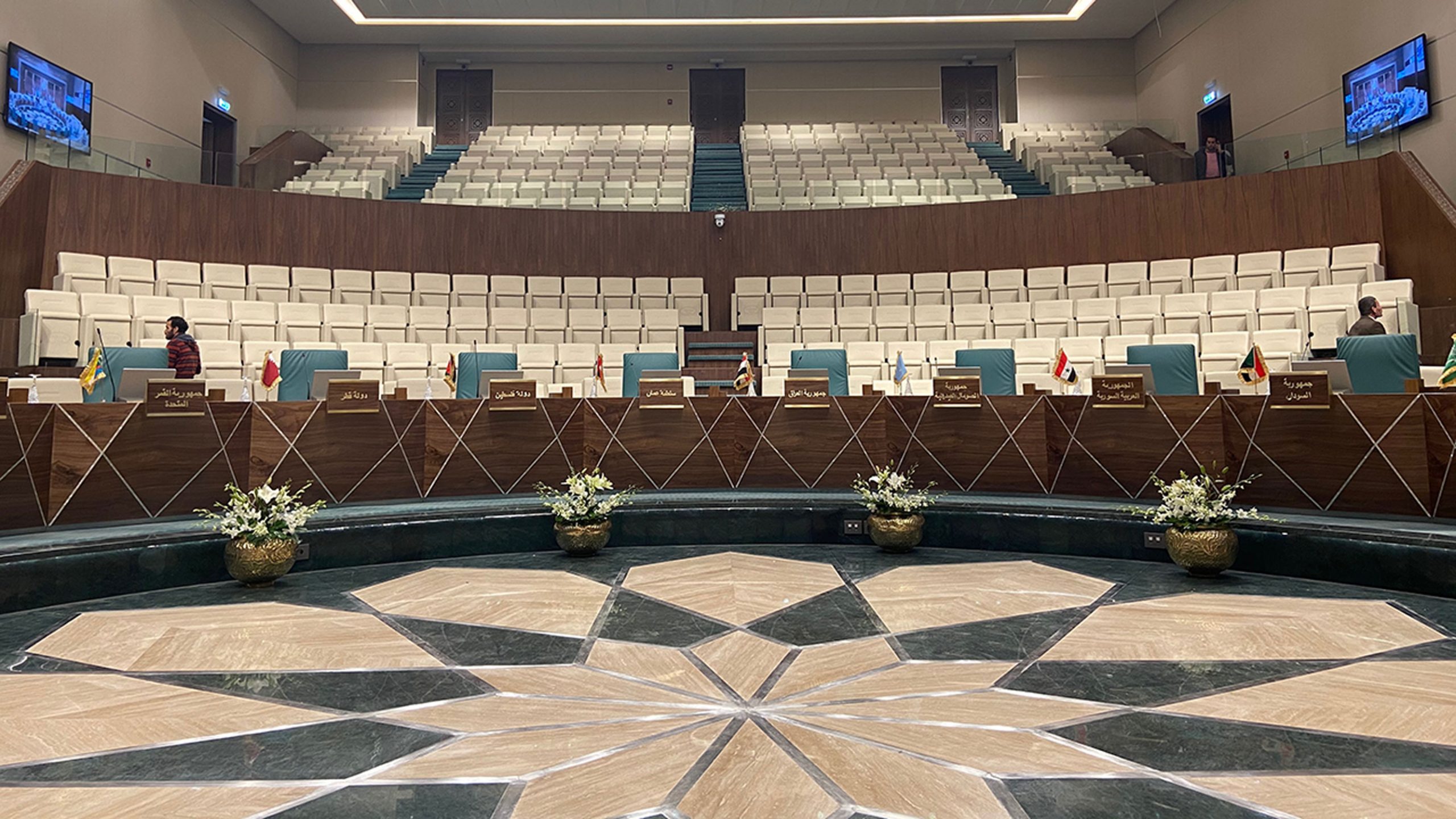 (Nada Debs)
(Nada Debs)In order to create a more consistent flow through the use of color, the shades of blue/green were integrated into the carpet and furniture. The colors of the carpet and seating were juxtaposed with the use of noble materials such as travertine, Guatemala Marble, and walnut wood. Contrasting colors were also added in the design of the furniture, with leather blue/green presidential chairs and leather beige delegates chairs, giving the space a contemporary feel.
The renovated Arab League Hall is a depiction of Debs’ mission to celebrate Eastern craftsmanship in contemporary design, through the integration of design concepts that reflect the purpose of the space while simultaneously bringing new life into traditional craft.